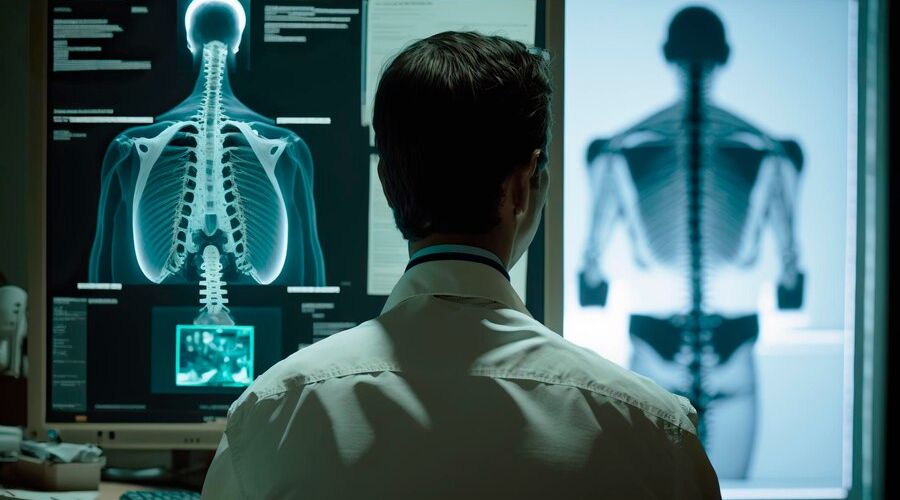Bi-parametric prostate MRI, also referred to as bpMRI, is an innovative imaging technique that plays a vital role in the managing and diagnosing of prostate cancer. This cutting-edge medical procedure combines T2 imaging and diffusion-weighted imaging (T2WI) to precisely measure the size of the prostate and lesions, identify cancer within the gland, and guide targeted biopsy. By addressing the limitations of MRI (mpMRI), bpMRI provides a valuable alternative for patients and healthcare professionals looking for the best diagnostic imaging services. In this article, we will delve into the impact of learning in radiology and its enhancement in the process of biometric prostate MRI for diagnosing prostate cancer.
Understanding Bi-Parametric Prostate MRI
Biparametric prostate MRI (bpMRI) is a modified version of multiparametric MRI (mpMRI) that excludes the use of dynamic contrast enhancement (DCE) imaging. It focuses on three key sequences: T2-weighted imaging (T2WI), Apparent Diffusion Coefficient (ADC) Mapping, and diffusion-weighted imaging (DWI). BpMRI has been recognized as an alternative to mpMRI to reduce costs, potential side effects, and examination time. However, the diagnostic accuracy of bpMRI is influenced by the experience of the radiologist and the quality of the MRI scan. The role of DCE in bpMRI remains a topic of debate among top radiology specialists.
The Challenges Faced by Radiologists in Prostate MRI Assessment
Interreader variation: Interpretation of prostate MRI remains prone to interreader variation, meaning that different radiologists may have different interpretations of the same MRI scan.
Inconsistency of image quality: Factors such as acquisition parameters, scanner differences, and interobserver variabilities contribute to the variability of imaging quality in prostate MRI.
Difficulty in performing and interpreting prostate MRI: Challenges in performing and interpreting prostate MRI were scored on a Likert scale, with median scores indicating that certain aspects of the process can be somewhat complicated.
Lack of standardization: Without the use of deep learning or artificial intelligence (AI), there is a lack of standardization in the detection of lesions suspicious of prostate cancer on MRI.
Limited automation: The absence of deep learning methods hinders the automation of tasks such as prostate gland segmentation and coregistration of MRI and ultrasound images, which are essential for accurate volume calculation and software-assisted MRI-guided biopsy.
Applications of Deep Learning in Prostate MRI Assessment

Deep learning has shown promise in supporting the assessment of prostate MRI. It can be used for various tasks related to prostate MRI assessment, including:
Detection and Segmentation of Suspicious Lesions: Artificial intelligence can provide fully automatic detection and segmentation of suspicious lesions in prostate MRI. Retrospective studies have shown that it can achieve similar diagnostic performance to clinical PI-RADS assessment.
Prostate Segmentation: Deep learning techniques can be applied to segment the prostate gland in MRI images. This segmentation helps in accurately identifying and analyzing the gland for further assessment.
Cancer Detection and Localization: Deep learning algorithms can assist in detecting and localizing prostate cancer in MRI images. This can help in early detection and accurate localization of cancerous lesions.
Gleason Grading: Deep learning can be used to determine the Gleason grade of prostate cancer based on MRI images. Gleason grading is an essential factor in assessing the cancer and planning appropriate treatment.
Postoperative Prediction: Deep learning technology enables the prediction of postoperative outcomes based on MRI images. This can assist in estimating the prognosis and guiding postoperative care for patients with prostate cancer.
Overall, deep learning (DL) has the potential to revolutionize prostate MRI assessment by automating and improving various aspects of the process.
Benefits of Deep Learning in the Field of Radiology
Deep learning has made advances in the field of radiology in the provision of teleradiology services. Teleradiology refers to the practice of transmitting images from one location to another for examination by radiologists who are not physically present at the health center.
The use of deep learning algorithms in teleradiology services has several benefits:
Improved Efficiency: Deep learning algorithms can analyze large volumes of medical images quickly and accurately. This enables radiologists to interpret images more efficiently, leading to faster diagnosis and treatment planning.
Enhanced Accuracy: Deep learning models can learn patterns and features in radiological images, allowing for more accurate detection and diagnosis of various conditions. This technology can help reduce human errors and improve diagnostic accuracy.
Access to Specialized Expertise: Teleradiology services allow healthcare facilities and clinics in remote areas to access specialized radiologists’ expertise. Deep learning algorithms can assist in the interpretation of complex cases, providing valuable insights and guidance to local healthcare providers.
Seamless Image Transmission: Teleradiology relies on telecommunication systems to transmit images securely and efficiently. Deep learning can optimize image compression and transmission protocols, ensuring that high-quality images reach remote radiologists without significant loss of information.
Cost-effectiveness: Teleradiology services can help reduce costs associated with transportation and on-site radiology staffing. Deep learning algorithms can assist in preliminary image analysis, enabling radiologists to focus on more complex cases and optimizing resource allocation.
In terms of the teleradiology services market, it is a rapidly growing sector within the field of radiology. The global market for teleradiology services was estimated to be valued close to $1.9 billion and is expected to experience a compounded annual growth rate (CAGR) of 16.8%. It is expected that this market will reach a valuation of $46.7 billion in the future. This growth is being driven due to its efficiency and increasing demand for healthcare services.
Statim Healthcare – Your Trusted Partner for Radiology Services
Outsource your radiology needs to Statim Healthcare and experience unmatched quality and efficiency. We offer a wide range of teleradiology services, from X-rays and MRIs to CT scans and ultrasounds, all performed by our expert team of top radiology specialists. With cutting-edge technology and the latest equipment, we provide accurate and timely diagnostic reports to help you make informed decisions about your patient’s health. Trust us to deliver exceptional radiology services that meet your unique needs. Contact us to learn more about our services and how we can enhance your healthcare facility.

